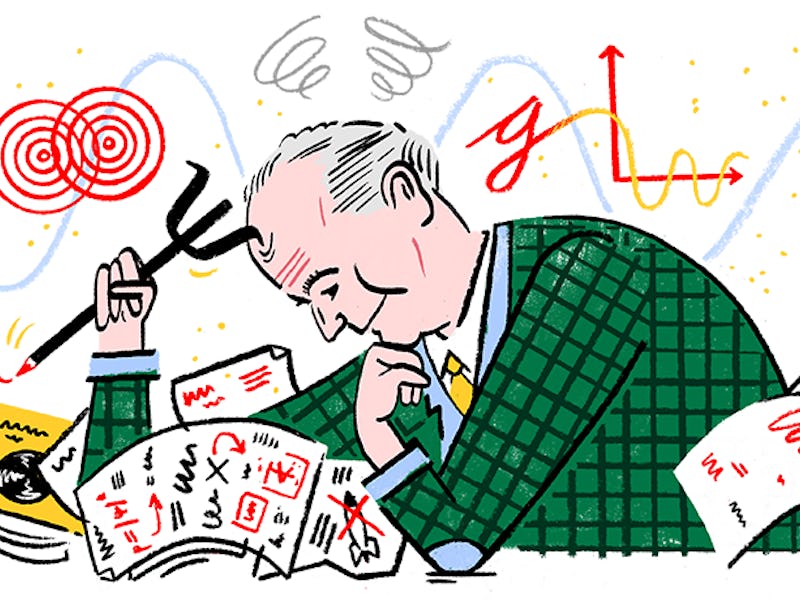Why Google Doodle Marks Quantum Physicist Max Born’s 135th Birthday
His rule was a game-changer for physics.

Google celebrated the life of Max Born on Monday, the German physicist whose ideas around quantum mechanics aided the invention of the modern personal computer and the MRI scanner. Born, who was born on December 11, 1882 in Breslau, Germany (today Wrocław, Poland), won the Nobel Prize for Physics in 1954 for his contributions to the field.
Over the course of his life, Born worked with a number of high-profile physicists like Max Planck, who he assisted during a professorship at the University of Berlin in 1915, as well as Werner Heisenberg, who he worked with when he was made professor of theoretical physics at the University of Göttingen in 1921. Born also worked with such household names as Enrico Fermi and J. Robert Oppenheimer.
Born is perhaps most famous for the “Born rule,” which he outlined in a 1926 paper. It helps predict where a wave particle will be located in a quantum system using mathematical probability. Before, physicists had to use unwieldy measurement apparatus to find particles in such systems, but Born theorized that number arrays called matrices could give similar results.
“The Born rule works extraordinarily well, making quantum theory the most accurate scientific theory we have, but it is also an assumption,” said Brian Koberlein, a senior lecturer of astrophysics at the Rochester Institute of Technology. “Even if it is wrong on some level, the great success of quantum physics demonstrates that it certainly works in most cases.”
The development of the rule helped lead to a wide variety of inventions that many of us use today. Quantum mechanics have helped with the creation of medical imaging machines like the MRI, lasers like the ones found in Blu-ray players, and even personal computers. Klaas Landsman, professor of mathematics at Radbound University in the Netherlands, described it as “almost single-handedly responsible for practically all predictions of quantum physics.”
Google also shared draft versions of Monday’s doodle, which was created by Berlin-based illustrator Kati Szilagyi:
A draft of the Max Born doodle.
A very Neptune-like illustration.
Born with his Nobel Prize.
Born was forced to leave the university of Göttingen in 1933, after the Nazi government dismissed all Jewish people from their academic positions. He fled to England, where he then taught in Cambridge and Edinburgh, before eventually returning to Germany in 1954. He passed away on January 5, 1970 in Göttingen.
It’s not the first time Google has used the homepage doodle to highlight a famous creation. Previous doodles have celebrated the life of astrophysicist Subrahmanyan Chandrasekhar, famous for discovering the lowest mass a star could have while still reaching the supernova stage, as well as horticulturalist Gertrude Jekyll, who applied artistic principles to gardening. There’s also been some less conventional doodles, like a November edition that commemorated the invention of the hole punch.